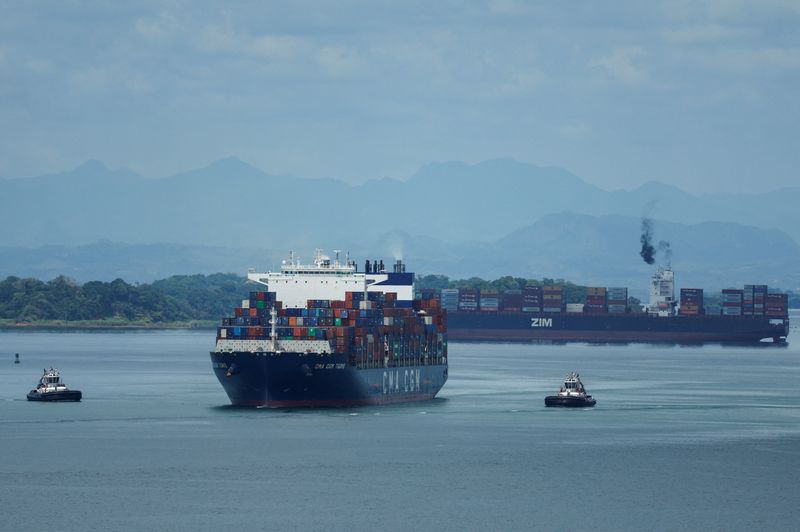
By Elida Moreno and Marianna Parraga
PANAMA CITY (Reuters) -The Panama Canal’s profit increased about 9.5% in the fiscal year ended in September to $3.45 billion despite a severe drought that reduced the number of vessels that passed through the waterway, its authority said on Friday.
The third driest year in the canal’s history reduced water available to operate, forcing its authority to cut the number of ships authorized to pass per day between late 2023 and early 2024, while limiting their maximum draft allowed.
The restrictions, which caused long delays for some vessels to pass and forced others to seek alternative routes, were removed later this year after rainfall replenished the country’s water reservoirs.
The waterway handled 423 million tons of cargo through its locks and saw passage of 27.3 ships per day on average, down from about 36 the previous year. But a 5% reduction in operational costs helped ease the financial effect of the drought.
Revenue increased by $18 million to $4.99 billion, the authority’s vice president of finances, Victor Vial, told journalists, citing preliminary figures.
The canal, which is frequently not filling the 36 passage slots per day it is now offering, is adding incentives for some vessels to return, including bulk carriers and liquefied natural gas tankers, while advancing $8.5 billion in projects for the next seven years including new infrastructure.
“Transits are slowly recovering,” Vial said.

A new long-term reservation system allows shippers to participate in auctions to secure slots up to a year before passage. Other measures include conservation strategies that reduced water usage for each passage by 12% in the fiscal year.
Panama is betting on a $1.6 billion project to dam the Rio Indio river as a long-term solution to deal with extreme weather events. Creating the new reservoir is expected to require to relocation of hundreds of families living near the canal’s area.
This post is originally published on INVESTING.


